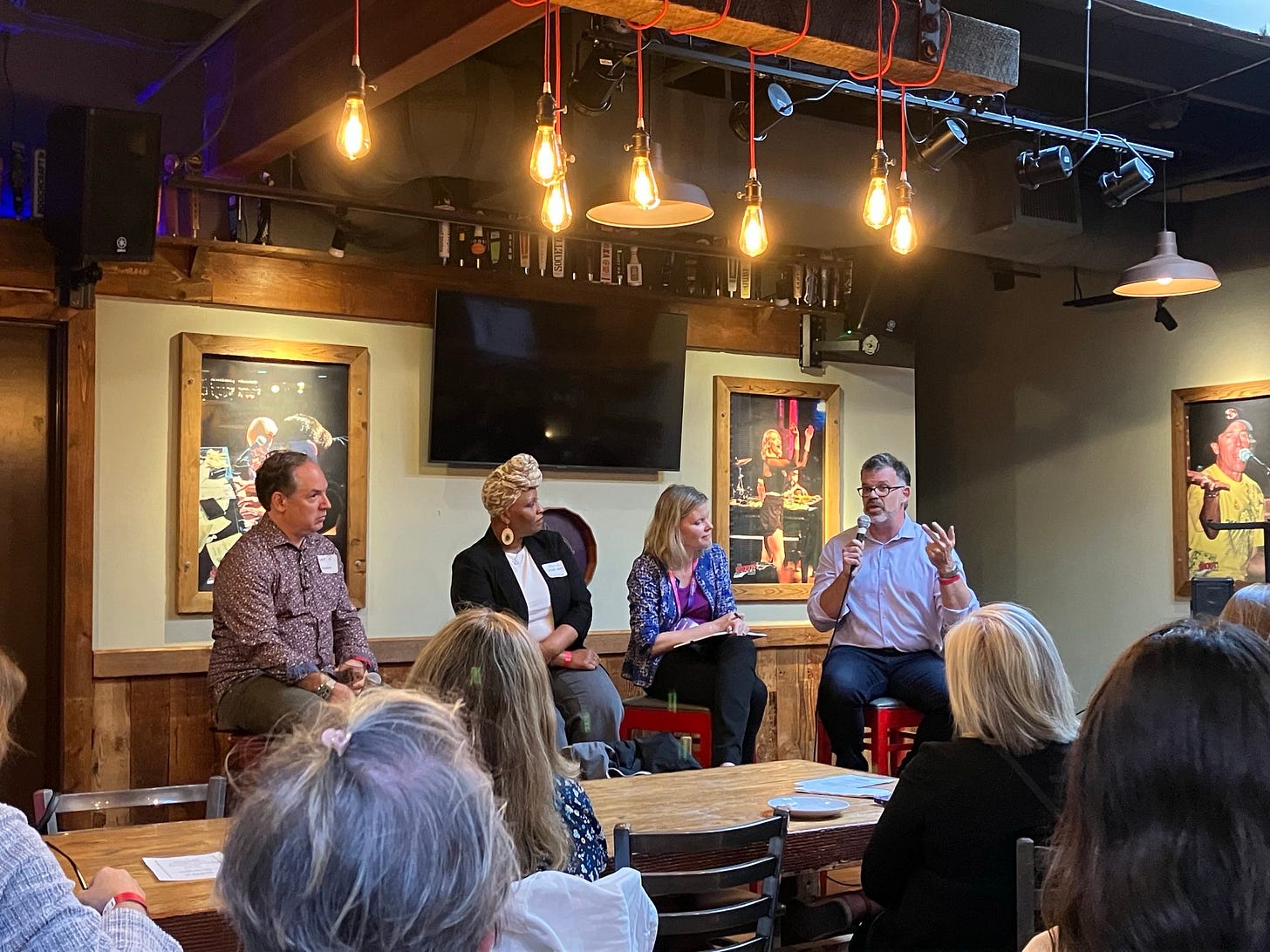Generative AI is in the education "AIR"
But which way is the wind blowing?

It’s only Wednesday, but it’s been quite the week here at Cognitive Resonance. On Monday, Education Next published my op-ed questioning whether generative AI chatbots make good tutors, and taking a few direct swipes at Khan Academy’s “Khanmigo” in particular. Then on Tuesday, in the department of fortuitous if slightly awkward timing, while attending the ASU+GSV conference in San Diego, I debated whether AI in education is vastly overhyped…with Khan Academy’s chief learning officer Kristen DiCerbo.
So here are my rapid reflections on the debate, and the conference more generally.
First, I credit DiCerbo for being a willing and cordial adversary when it comes to the role that chatbot tutors should play in education. Maybe I was just hearing what I wanted to hear, but throughout our conversation she stressed that chatbots should not replace human teachers, that they are at most an “additional tool” to help students, and that some people (*cough* Bill Gates *cough*) are getting way ahead of themselves in predicting AI tutors will surpass human educators. All points I appreciate.
At the same time, the question remains whether this new tool is actually beneficial for student learning. As I argued, we should admit at least the possibility that having factually unreliable yet highly confident digital avatars instructing kids – avatars that lack the ability to theorize about what’s happening in the minds of the humans they interact with – may result in some educational harm. DiCerbo responded by saying teachers who are deploying Khanmigo haven’t bailed on it due to hallucinations. Fair enough, but are teachers bothering to check how often this is happening? How could they even find the time to do so?
On that point, one of our co-panelists, Akeshia Craven-Howell of Bellwether Education offered the important observation that school districts aren’t carving out a lot of time to help teachers understand how generative AI works or how these tools should be deployed in classrooms, nor is AI feeding into a larger strategic vision of learning. While I’m pessimistic on tutors, I do think AI can be useful for certain educational purposes, but to get there starts with better understanding how the tool works. This is what Cognitive Resonance aims to help with.
Education reporter Greg Toppo was in attendance and asked a good question about the future of AI. He noted that on human benchmark tests such as the bar exam, chatbots have dramatically improved just over the past year. Might that trajectory continue? To which I replied – maybe. But the problem is that evaluating these tools based existing human tests tells us very little about their ability to encounter novel problems that fall outside the data they’ve been trained upon. And so I’m skeptical whether chabots will ever be good at dealing with the delightful novelty generators we call children. We shall see.
Also, Greg recently wrote an excellent in-depth piece on the history of IBM trying – and failing – to create an educational tutor using Watson. Feels relevant!
Speaking of the future, perhaps my spiciest debate take is that for all the frothy hype surrounding AI in education at the conference, it felt somewhat…behind the times? In my view, there’s a growing awareness among prominent AI scientists that large-language models have real deficiencies that aren’t easily solvable. For example, Yann LeCunn, Meta’s global head of AI research (and Turing Award winner for his work around developing neural networks), says that LLMs “suck” because they cannot reason, cannot plan, lack a world model, and cannot be fixed absent a major redesign. As I argued, it’s fine to disagree with him (and me), but if you do, is that because you’ve grappled with the underlying science and come out on the other side…or because you just really want this technology to succeed?
Ok, enough on the debate (and thanks to Bellwether for hosting). Here are some quick hits on the ASU+GSV conference and its accompanying three-day froth fest for AI in education, dubbed the “AIR show”:
I’m bummed I missed Dan Meyer’s keynote session at the AIR show, where I’m told he took some swipes at Magic School – err, “WizardSchool” – while underscoring that many-if-not-most ed-tech AI products don’t address the real needs of students and teachers. Ten years ago, Dan and I were moored together on lonely Personalized Learning Might Be Bad Island, now it seems we’re hopping over to Please Think Critically About AI in Education atoll. Every post on his Substack lately makes for vital reading.
My friend Mary Jo Madda of Google summed up the vibe in the AIR:
Let’s check back in a year and see if this still holds!
Searching for something positive to say, I am mildly encouraged to at least see some companies trying to marry AI technology to cognitive science (here’s one example). Likewise, this helpful AI-edu market map from Laurence Holt is replete with references to learning-science principles, which is great. Of course, there are some big gaps related to some of the more complex aspects of education, such as the transfer of knowledge, that AI may be particularly poorly suited to fill, but maybe someone will surprise me.
It was particularly stimulating to meet up with Sean Trott and Cameron Jones, two cognitive scientists at UC San Diego who are thinking deeply and doing creative work to explore the strengths and limitations of large-language models. Part two of my extended conversation with Sean will be posted here soon.




Enjoyed your debate and meeting up with you! It was definitely interesting to see how AI is being discussed within the education sphere.